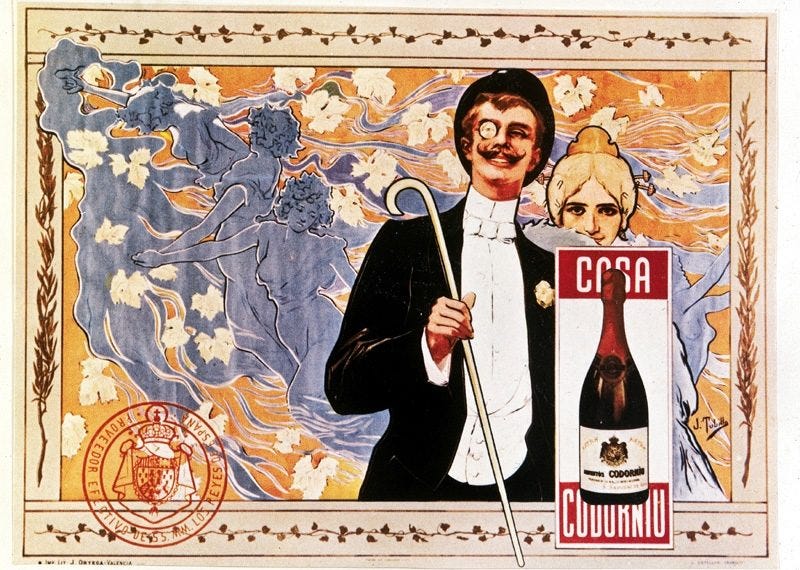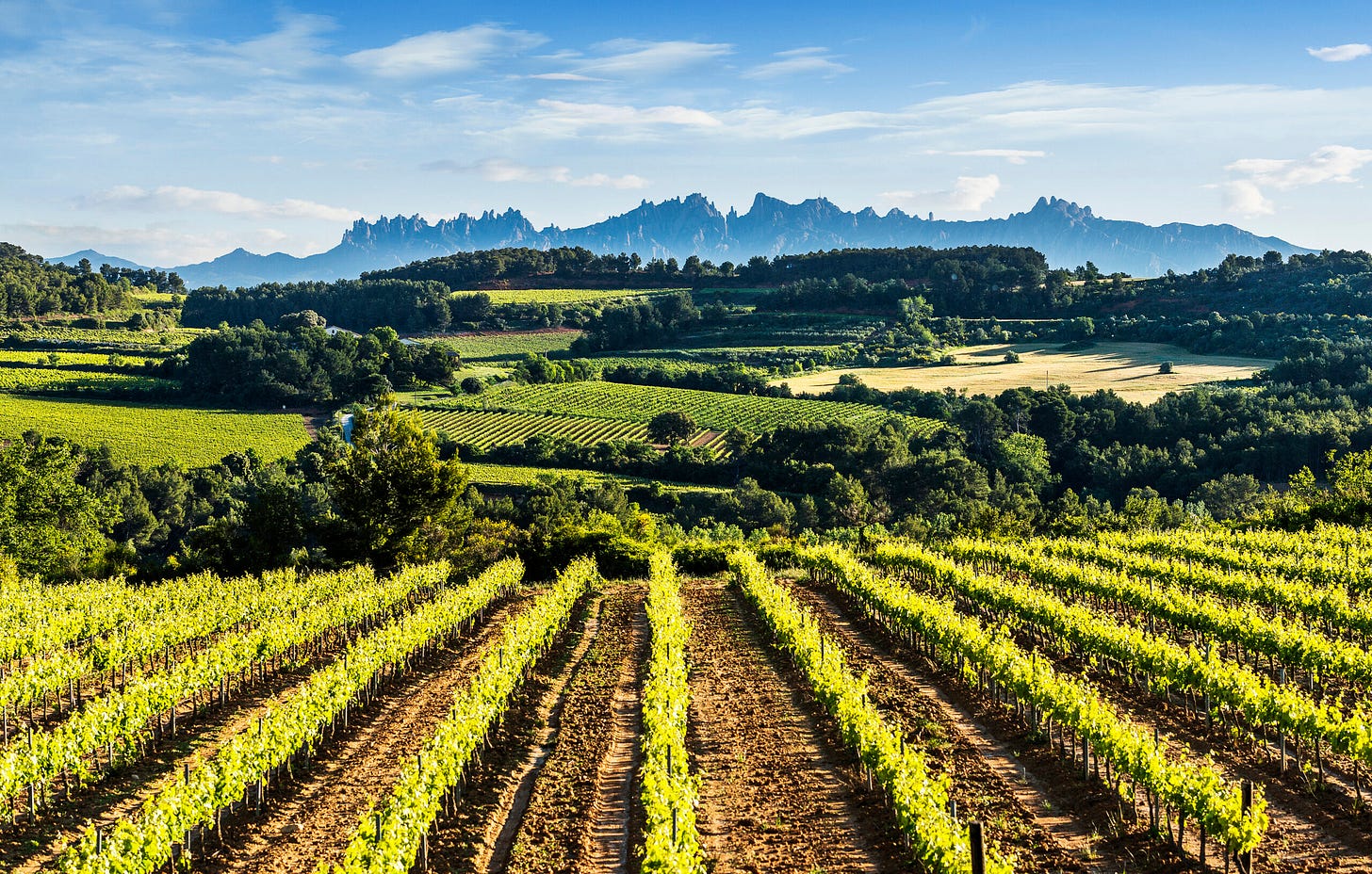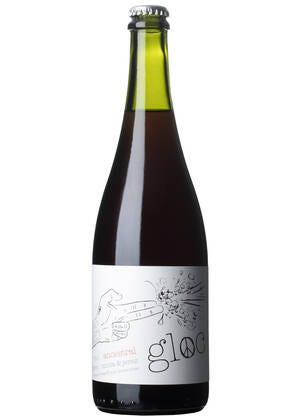Beyond Cheap Cava: My favorite Spanish Bubbles
If there's something I always have in my fridge (aside from water), it's a bottle of sparkling wine. Yep, because even in our agenda-controlled days, we never know what life can bring us. So, to celebrate something unexpected or to forget the defeats that routine imposes on us, a good, fresh sparkling is a lifesaver. It goes well with everything, cleanses our palates, and is lighter than still wines, not to mention heavier spirits.
Although I know Champagne is, for some, the undisputed king in this territory (well, they invented the sparkling category), there are plenty of other fish in the sparkling sea, from the beautiful Crémants from other French regions such as Burgundy or Jura to the relatively unknown Franciacorta from Brescia (Northern Italy). We can have sparklings of different styles and prices.
But, well, living in Barcelona, the sparklings I'm more accustomed to are from Spain. And wait, there's not only Cava, with its major (and poor quality) brands such as Freixenet and Codorníu; there's much more to try and choose from.

Let’s take a look at some of my most beloved options.
Gramona - III Lustros
A famous passage in the Bible says, "Good things come to those who wait." Well, I know they liked their wine back in the day, but hell yeah, they would say this phrase again and again if they had this delicious sparkling, which is only put on the market after aging for 7 years in the bottle. But wait, it doesn't end here; the available bottles are from 2015, so the aging time was before that. Yes, we are talking about a sparkling that already has a lifespan of a minimum of 15 years (that's why the name III Lustros = 15 years in Spanish). The grapes used here are Xarel-lo and Macabeu. And it is utterly delicious. Think of toasted almonds, rich and buttery brioche bread, and a subtle citrus ending. The price, for all this time and effort, is a bargain; for 35 euros, it's yours.
Mas Candí - Indomable
If you want to take a walk on the natural side, but without the funkiness it may come with, then this sparkling is for you. Indomable is a blanc de noirs, which means it is made from a red variety; in this case, the Penedés native Sumoll and a bit of Xarel-lo as well. Like the Gramona, its fermentation method includes some years in the bottle, in this case, 5, but here we are talking about a much smaller producer, artisanal if you will. It is on the citrusy and refreshing side, a springtime companion for 21 euros.
I guess you noticed by now I didn't use the word Cava. Yes, that's right, because Cava is so passé. I'm kidding, but the two producers above are part of Corpinnat. And what on earth is that? It's a collective brand validated by the EU that has higher quality standards than Cava. And in my opinion, they deliver: to be a Corpinnat, your sparkling must pass through some years of aging in a bottle, your vineyards should be ecological, and the grapes handpicked. Are those Corpinnat more expensive than Cava? Most of the time, yes, but most of the time a Corpinnat delivers so much more than a regular Cava.
Raventós i Blanc - De Nit
Raventós i Blanc holds great tradition in the name since they are direct heirs of Josep Raventós, the first guy in the mid-1800s to produce sparkling wine in Spain (he used the traditional method). Some Raventós folks were managing until recently the big - and regular - Codorníu estate, since our guy Josep married a Codorníu heiress in his glory days. Those are all people who have sparkling in their blood and huge savings accounts, I suppose. Nevertheless, Raventós i Blanc is a more modern project, the heart and soul of Pepe Raventós that since 2001 has been championing very elegant sparklings and some nice still wines. De Nit is a rosé that has by now fans all over the world with its light strawberry and cream flavor. What makes it different is a little Monastrell grape variety in the mix, which adds more unorthodox flavors to the sparkling. You can find it for 18 euros.
Oh, Raventos i Blanc is neither Corpinnat nor Cava in case you are wondering. Why? Pepe Raventós says his terroir is different, so it wouldn't make sense to be part of any existing denomination.

Cal Xurriu - Carmeta i Eulàlia
This is a recent discovery for me, but it is so tasty and different that I had to put it here on this list. The young, hip, and biodynamic folks at Cal Xurriu came up with this Ancestral, (a just once-fermented sparkling, instead of 2 fermentations champagne style) that is complex, powerful, and has a long finish. One of my best recent discoveries. This one is made with Macabeu and Sumoll grapes. A little pricey for being so young and fresh, 25 euros, but utterly delicious.
All of the sparklings mentioned above are made in the region where the old Mr. Josep Raventós started his production, the beautiful Penedès area, located just 1 hour away from Barcelona. That's where most of the Spanish sparkling production is concentrated from those times until today, with tons of producers and expertise. But, there are producers from all over Spain making interesting sparklings. My favorite comes from Northern Spain and the name is:
Verónica Ortega - Gloc
Hailing from the hilly and cool Bierzo (Northwestern Spain) we have this intense pink rosé Ancestral from Verónica Ortega, one of my favorite winemakers. She uses here the same varieties she uses for the still wines: Mencía and Palomino. Until I had it, I thought it would be hard for an ancestral to capture the softness and elegance of the Mencía grape, but it's there, due to the process and the care of the winemaker. It's a great choice for a fresh afternoon or even for a lunch pairing. Costs around 20 euros.
Bonus track: let’s add some Cava. But a great one.
Mestres - Clos de Nostre Senyor
If there is a producer that is still into the Cava Denomination of Origin and does amazing stuff, it is Mestres. This family-owned estate claims to have roots in the Penedès region since the 1300s (!!) and was the first to produce a brut nature (that means a sparkling, without added sugar) in Spain. The sparklings from this family have a special energy and color, always with a hint of honey and nice intensity and acidity. The one I selected for this post has an easily noticeable almond touch. The Mestres family only releases 3,700 bottles per vintage, and those babies spend 90 months aging before they are good to go. A creamy Cava dream you can get for 38 euros.
Well, now you have many options to choose from, all of them delicious and will pair perfectly with whatever occasion or dish you serve!









